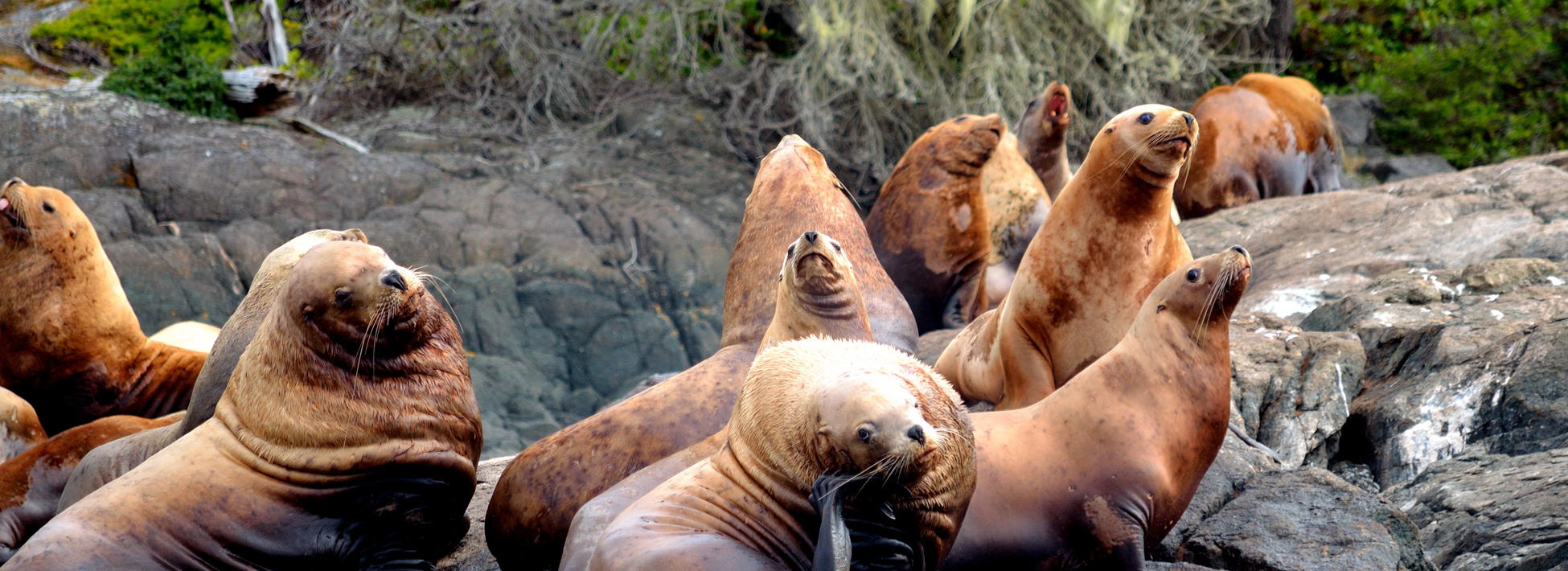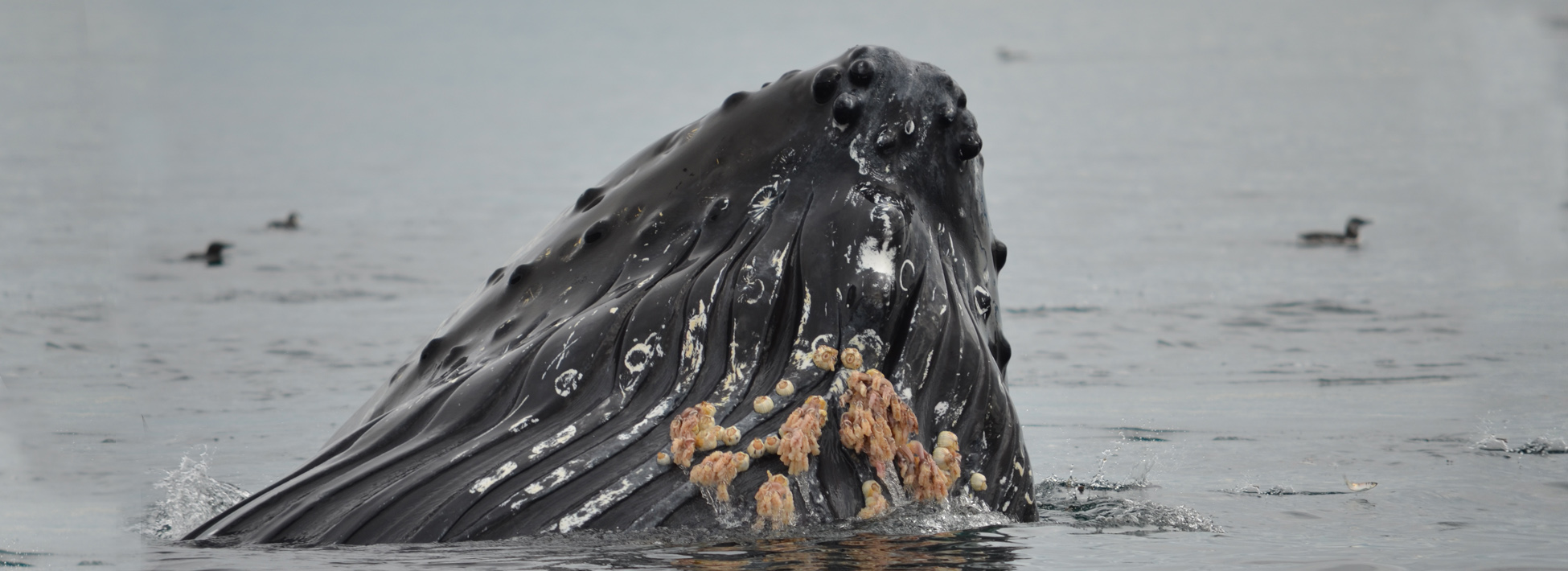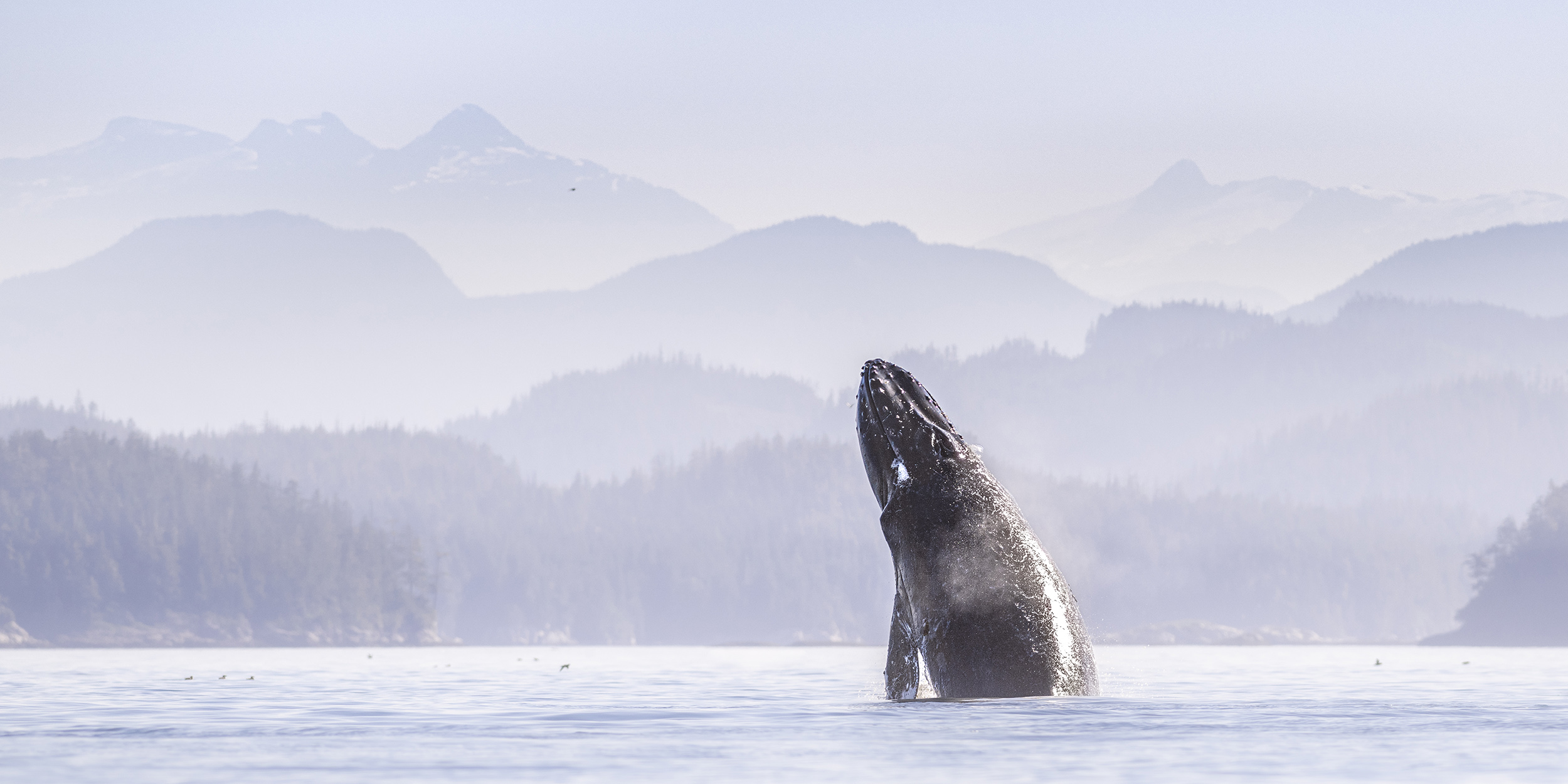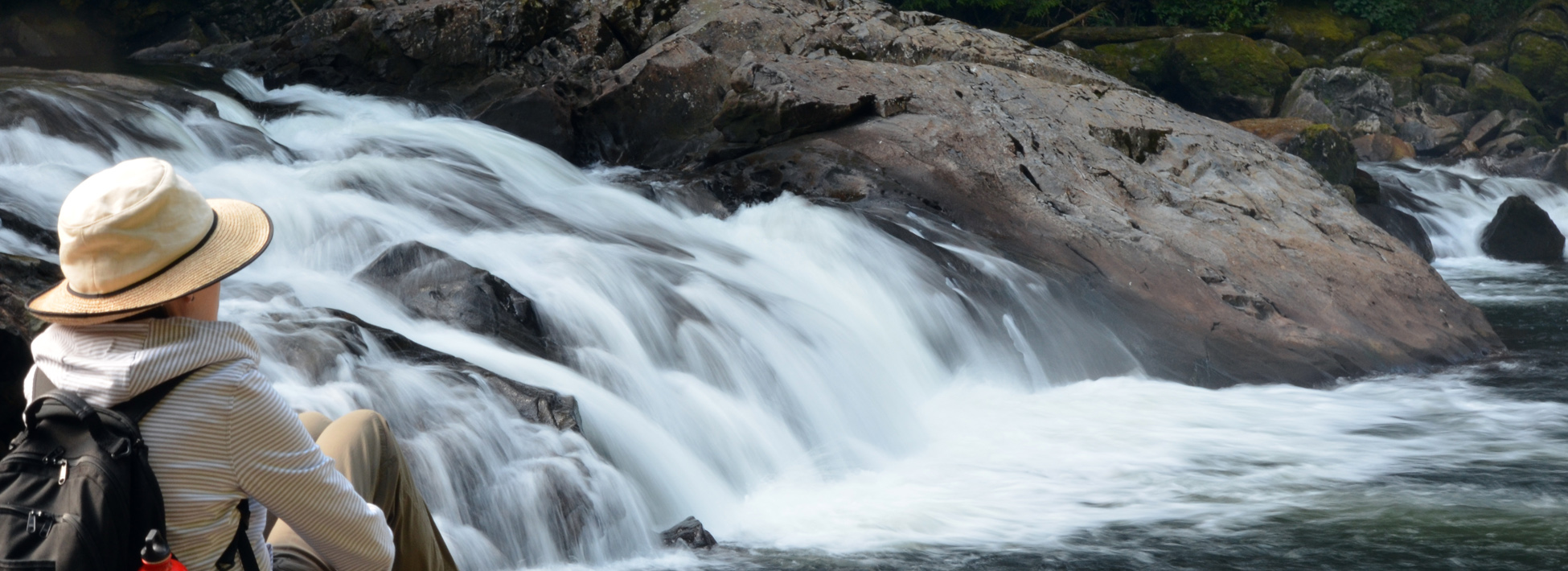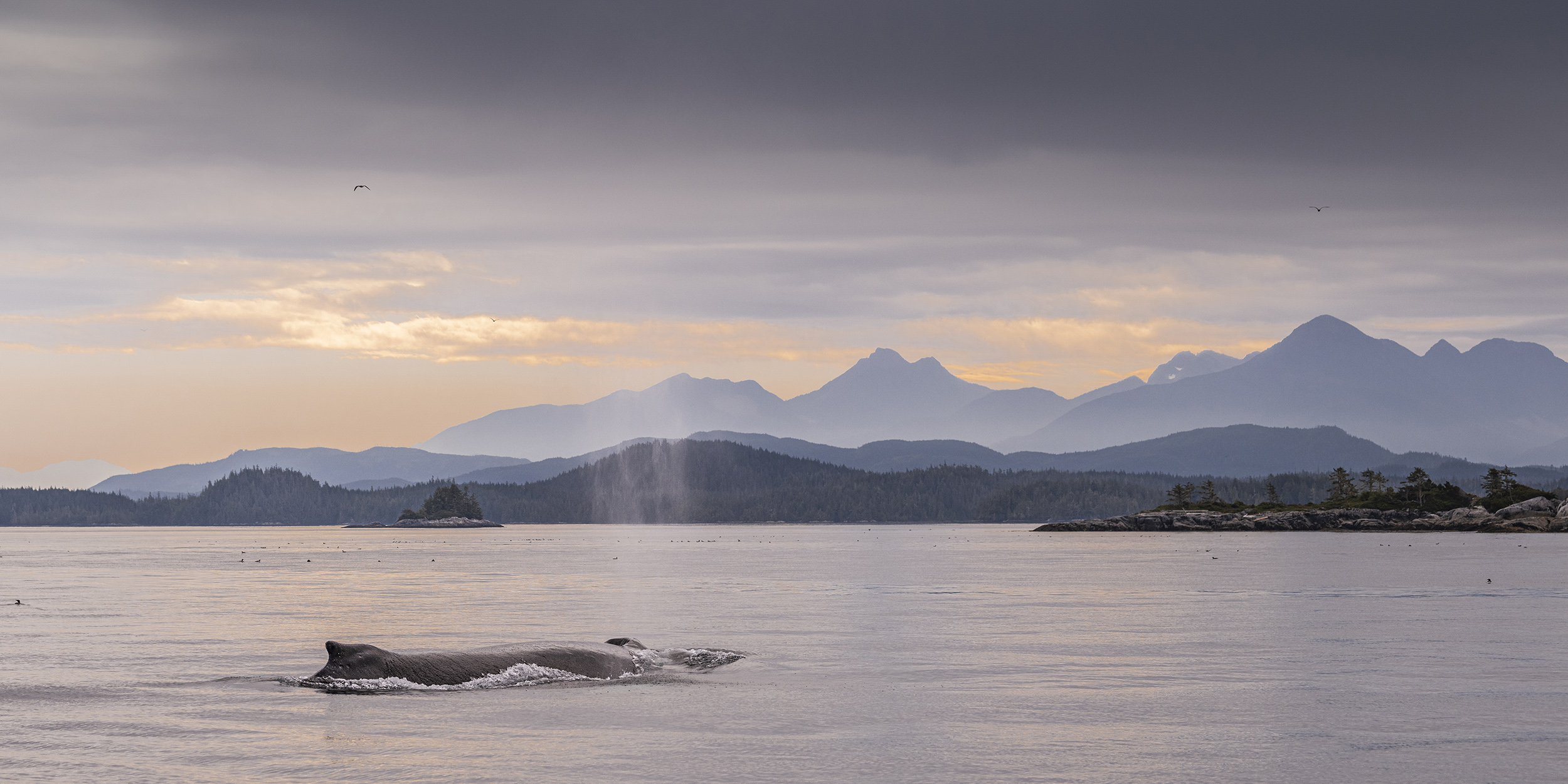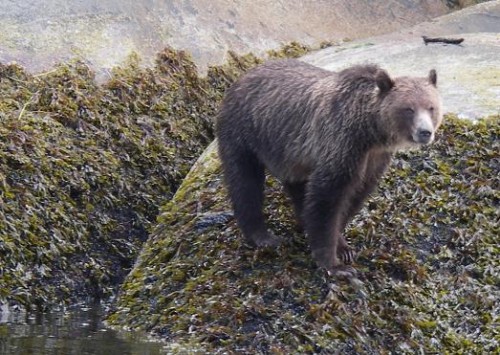
This is the look you get from a grizzly bear when the current pushes you within their comfort zone. The happened this past September on the way down Knight Inlet coming back from the day’s grizzly watching tour. We were looking for black bear when one of my guests spotted this grizzly eating kelp on the shore. We turned off the motor and let the tide do the rest and unfortunately (or fortunately depending on your viewpoint) we drifted closer than we should have but in deep water. With tide and wind it is impossible to paddle the larger boat and we did not want to start the motor and scare the bear. We eventually moved past the grizzly which remained on the beach eating.
